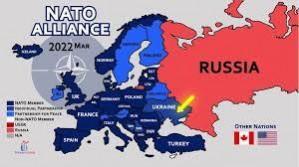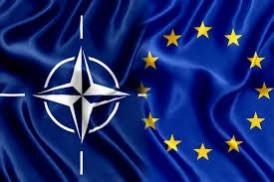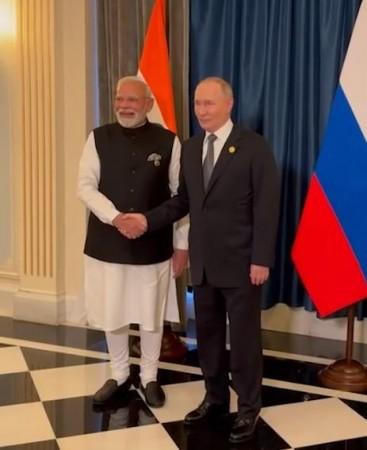
In the space of a few weeks Europe has moved from caution to urgent decision. What began as technical debates in Brussels has hardened into an existential question for the continent's security architecture. At the informal leaders' meeting in Copenhagen on 1 October, EU heads gave "broad support" to a package of measures that will return to the European Council on 23–24 October 2025 for possible formal decisions. Those measures are consequential in three domains at once: finance, diplomacy, and defence. Taken together they change the game with Moscow. They also create many more pathways for miscalculation than for clear, stable deterrence.
"We are entering a period where decisions once thought technical are now strategic acts of war or peace," warned Josep Borrell, EU High Representative for Foreign Affairs.
"The line between deterrence and provocation is thinner than ever."
This is not alarmism. It is a prognosis based on the substance of the proposals and the political dynamics that surround them. The proposals include using the income or cash balances from hundreds of billions of euros of Russian sovereign assets frozen in the West to underwrite a large "reparations" loan for Ukraine. They include a decisive push to build layered drone and anti-drone defences along Europe's eastern approaches. They include tighter restrictions on Russian diplomats' movements inside the EU in response to alleged covert sabotage and espionage. Each measure has a legal and operational logic. Each also carries a political and escalation logic that must be managed, or the continent will discover that deterrence and de-escalation require more than slogans.
"If Europe chooses expediency over legal robustness, it will trade an immediate political victory for a long-term strategic wound," cautioned Professor Michael Clarke, former Director General of RUSI, noting that rapid asset confiscation without legal foundations could undercut Western credibility.
That course will not inevitably lead to general war. But it does raise the probability of sustained, damaging tit-for-tat measures that will ripple through markets, critical infrastructure, and security postures across the continent. The Kremlin has already warned that using frozen state assets would be treated as theft and has threatened countermeasures. That warning is not mere rhetoric. It is a public framing of how Moscow perceives red lines.
What Brussels is actually deciding and why it matters
The proposals under discussion are concrete and legally nuanced. The European Commission and many capitals prefer a structure that does not purport to "confiscate" assets outright but instead uses matured cash balances and interest in creative legal structures to underwrite a loan or compensation package to Kyiv. Officials insist they will remain within international and EU law, a position echoed by the European Central Bank which has publicly warned that any solution must preserve legal and financial credibility. The scale is large: estimates of immobilised Russian assets in European systems run into the low hundreds of billions of euros, with proposals frequently referencing figures in the range of €210 billion, of which €191 billion is held by the Euroclear clearinghouse in Belgium.
"We have to act within the boundaries of law and protect the stability of the euro," stated Christine Lagarde, President of the ECB.
"The credibility of our financial system cannot become collateral damage of war."

At the same time the EU is pressing a "drone defence" agenda. Leaders spoke in Copenhagen of a rapid build-out of layered systems, ranging from detection and electronic warfare to kinetic interception and mass-produced counter-drones, sometimes described in shorthand as a "drone wall." The European Parliament has likewise pushed the Commission to propose an EU drone package that accelerates research, production, and rules for civilian and military contexts. These are defensive measures. They are also statements of intent: Europe is preparing to contest what it sees as a new form of asymmetric aggression.
"The next war will be fought as much by machines as by men," observed Lithuanian Defence Minister Laurynas Kasčiūnas, whose country is spearheading the €100 million Baltic Drone Shield initiative.
"Europe must not lag behind Ukraine's battlefield innovations."
Finally, the proposed restrictions on diplomatic movement aim to close an operational loophole used by hostile intelligence operations that exploit Schengen freedom of movement. If adopted in the form reported, Russian diplomatic and consular staff would face notification requirements and restrictions on travel inside the bloc. Moscow has signalled it will retaliate for such curbs.
"Diplomatic reciprocity has limits when embassies become extensions of hybrid warfare," said German Foreign Minister Annalena Baerbock.
The legal and market fault lines
Here is where law, markets, and geopolitics collide. Confiscation of sovereign assets would be legally fraught and could damage investor confidence in Europe. That is why authorities are seeking legally defensible workarounds rather than outright seizure. The argument made by several respected institutes is straightforward. If the West can design a structure in which immobilised assets back a loan that only becomes repayable if Russia pays reparations, then the measure is both practical and defensible. But if the mechanics are perceived as a disguised confiscation, the reputational and market damage could be substantial. The ECB leadership has emphasised that the euro's credibility must not be put at risk by hasty action.
"The euro's strength rests not on sentiment but on rule of law," said Fabio Panetta, Governor of the Bank of Italy.
"A breach of sovereign immunity for one war risks weakening the financial order for all."
There is a moral case for ensuring Moscow pays for the damage it has inflicted. There is also a legal and macroeconomic imperative to do so in ways that do not hollow out European financial credibility. This tension is not theoretical. It is already the main fissure inside the EU, and it will determine how hard or soft Moscow's countermeasures will be.

Plausible Russian responses and escalation pathways
Moscow's toolkit is asymmetric and layered. Expect a menu of responses calibrated to political objectives rather than proportionality measured by Western military standards. Likely options include:
* Cyber and hybrid attacks against critical infrastructure and corporate targets across Europe.
* Legal and financial countermeasures against Western assets inside Russia, and targeted seizure of foreign corporate property.
* Diplomatic tit-for-tat measures and expulsions.
* Encouraging proxies and partisan actors to sow political and social disruption inside EU states.
* Limited kinetic acts against Ukrainian supply lines or nearby theatres that increase pressure without provoking Article 5 responses.
These options allow the Kremlin to impose costs while avoiding the direct military confrontation that would be catastrophic for all sides. Still, accidents, airspace incidents, or misattributed cyber events can escalate quickly. The paradox is that the very instruments Europe is mobilising to reduce vulnerability - more sanctions, harder defences, tighter diplomatic controls can also generate more opportunities for dangerous miscalculation.
"Hybrid warfare thrives in the grey zone between law and response," noted Fiona Hill, former U.S. National Security Council Russia expert.
"Putin's strategy is to keep the West reacting rather than initiating."
Four scenarios and their estimated probabilities
For policy clarity we must think in scenarios not slogans.
Legalised reparations and containment (30 percent). Europe adopts a carefully drafted legal mechanism; Russia registers rhetorical outrage and limited economic retaliation. Markets wobble briefly but stabilise. This is the preferred, if fragile, outcome.
Sustained hybrid campaign (40 percent). Moscow responds with cyberattacks, sabotage, and economic countermeasures calibrated to avoid direct NATO military involvement. Costs mount for economies and societies across Europe.
Localized kinetic incidents (20 percent). Miscalculation or an escalatory episode in Ukraine or adjacent airspace leads to limited military exchanges that force NATO into difficult political choices. This remains avoidable but cannot be discounted.
Wide conventional confrontation (10 percent or less). Full continental war remains unlikely because of the mutual catastrophic costs and NATO structures. Yet low probability is not zero. Policy must be designed to manage even marginal probabilities.
"Escalation is rarely chosen; it is stumbled into," wrote Henry Kissinger in 2014 - a warning that remains chillingly relevant today.
These are not forecasts of inevitability. They are risk allocations to guide policy. The distribution is intentionally conservative on the high end for hybrid responses because that is where Moscow's incentives lie.
Imperatives for Europe and NATO
If Brussels wishes to reduce odds of dangerous escalation it must do four things at once.
Legal ironcladness and transparency. Any mechanism that uses frozen assets must be explicit, publicly justified, and legally defensible. Ambiguity invites litigation and retaliation. The EU should publish legal opinions, implementation steps, and safeguards that insulate the euro and reassure markets.
Political unity and burden sharing. A legally defensible plan will require guarantees and shared fiscal backstops from member states. The Commission must lock in unanimity or the widest possible political base to deny Moscow the propaganda of division.
Resilience first, deterrence second. Invest now in hardened civilian infrastructure, cyber defence, and mass-produced counter-drone systems. Deterrence without resilience is brittle. The EU's drone package should prioritise deployable, interoperable systems and clearly delineated rules of engagement to avoid accidental escalation.
Calibrated communication with Moscow. Maintain channels that can translate decisions into predictable, proportionate consequences while preserving options for de-escalation. A robust backchannel does not imply appeasement. It means reducing the risk of misreading and unintended escalation.
"Strategic patience and communication are the oxygen of deterrence," advised Admiral Rob Bauer, Chair of NATO's Military Committee.
"We must outthink before we outgun."
Imperatives for Moscow
Moscow faces its own strategic choices.
Choose measured, legal counters if it must respond. Indiscriminate attacks on civilian infrastructure would invite stronger, sustained economic isolation and a legitimate political coalition against Russia. That increases long-term costs for the Kremlin far more than targeted financial litigation.
Preserve room for negotiation. If Russia wishes to reduce its own isolation and friction with the West it must create incentives for a negotiated exit from the current impasse. That requires a political calculus Moscow has so far resisted but cannot ignore indefinitely.
"Even great powers cannot win endless wars of attrition; they only lose more slowly," observed Dmitri Trenin, former Director of the Carnegie Moscow Center.
The test of responsibility
European leaders have before them a morally compelling and politically hazardous task. There is a strong argument that Moscow should pay for the damage it has inflicted. There is an equally strong prudential argument that how Europe chooses to make Russia pay will determine whether the continent moves toward durable justice or a long season of grinding, asymmetrical conflict. If Europe chooses expediency over legal robustness it will trade an immediate political victory for a long-term strategic wound. The vote in late October will not automatically "ignite the next major war" but it will widen the aperture of risk. Responsibility demands instruments that are legally sound, politically unified, and coupled to a credible escalation management plan.
History will judge whether the leaders in Brussels, Berlin and Paris acted with the foresight required by a fraught moment. The safe course is not the cautious course of inaction. The safe course is meticulous, transparent action paired with hardheaded diplomacy and rigorous resilience building. That is what deterrence looks like in the age of drones, hybrid warfare and globalised finance. It is also the only route that prevents a tense, avoidable slide into perpetual crisis.
"The difference between foresight and hindsight is the distance between deterrence and disaster," wrote historian Margaret MacMillan, reminding Europe that strategic wisdom often lies in the balance between justice and restraint.
[Major General Dr. Dilawar Singh, IAV, is a distinguished strategist having held senior positions in technology, defence, and corporate governance. He serves on global boards and advises on leadership, emerging technologies, and strategic affairs, with a focus on aligning India's interests in the evolving global technological order.]

















